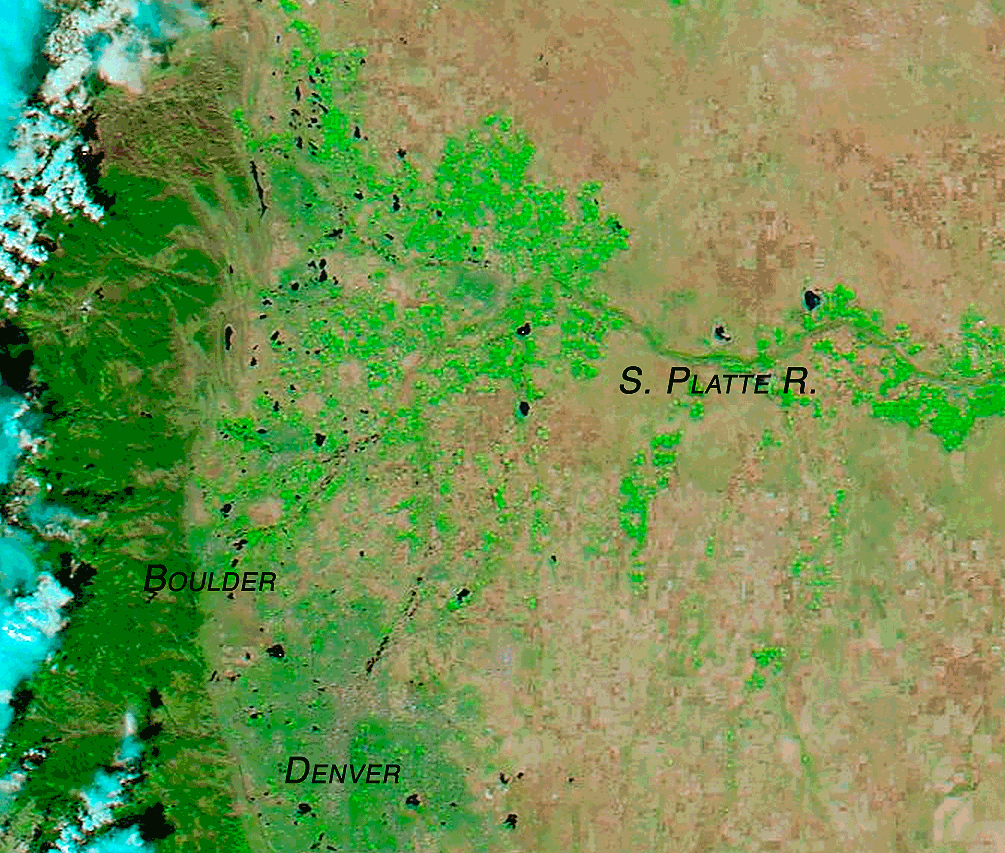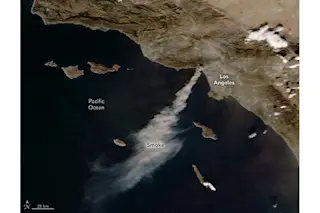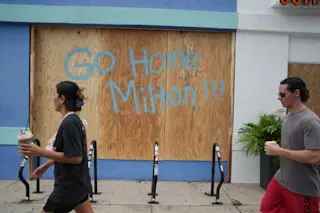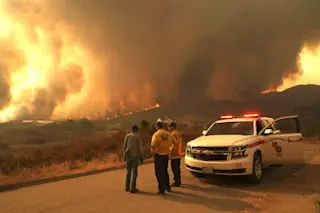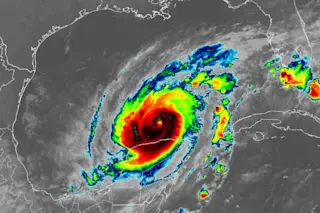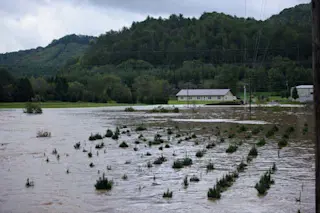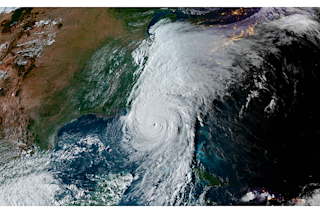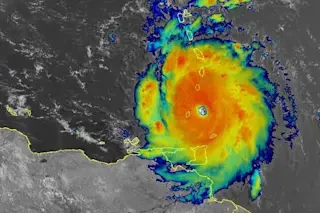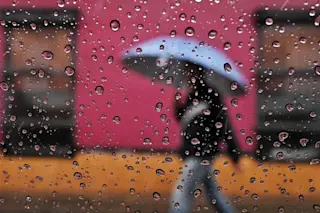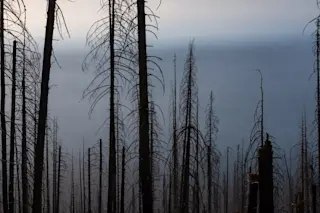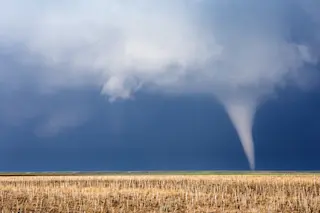An animated gif consisting of before and after false-color satellite images of the Denver-Boulder area. Water is black or dark blue; sediment-laden water or muddy ground is pale blue; vegetation is green; and bare earth is tan. (Images: NASA. Animated gif: Tom Yulsman) As I write this on Sunday at 10:30 a.m. from my home near Boulder, Colorado, it is pouring buckets — again. Flood warnings are once again up for a region that has already suffered a 1,000-year rain event, and which is reeling from heart-rending death and destruction. So far, hundreds of people are unaccounted for. Moreover, four people are confirmed dead, but search and rescue has taken precedence over looking for additional victims. So that grim toll is definitely going up, probably significantly. My family and I are safe. Niwot is pretty much high and reasonably dry. The only significant impact we've experienced is a boil-water directive. ...
Colorado Deluge: Flooding Before and After as Seen From Space
Denver-Boulder area flooding reveals devastation from a possible 100-year rain event, leaving hundreds unaccounted for. Learn more.
More on Discover
Stay Curious
SubscribeTo The Magazine
Save up to 40% off the cover price when you subscribe to Discover magazine.
Subscribe

